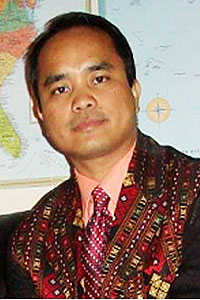Myanmar has witnessed two historic agreements in the past 68 years: the Panglong Agreement (PA) of 1947 and the Nationwide Ceasefire Agreement (NCA) of 2015. Both are important and significant agreements, especially concerning inter-ethnic relations and national reconciliation.
The PA was signed on Feb 12, 1947 in Panglong in southern Shan state between the ethnic Burmans led by General Aung San, and the Shan, Kachin and Chin groups.
Like the PA, the NCA was also an exclusive accord, signed by only some ethnic groups. Out of more than 20 ethnic armed organisations in the country, only eight signed the peace deal in Nay Pyi Taw on 15 Oct, 2015. The two largest armed groups -- the United Wa State Army and the Kachin Independence Army -- were among those that did not sign the deal.
Though eight groups signed the NCA, only four ethnic groups were represented in the agreement: the Burmans, the Karen, the Shan, and the Chin -- similar to the PA representation.
Three different organisations represented the Karen people at the NCA: the Karen National Union, the Democratic Karen Benevolent Army and the Karen Peace Council.
At the PA signing ceremony, the Karen sent observers. At the NCA signing ceremony, the non-signatory groups did not send observers.
One fundamental principle of the PA was the acceptance of full autonomy in internal administration for the frontier areas.
In the months preceding the agreement, there was deep distrust between the Burman leaders and the frontier people. Even the British colonial government was concerned that the non-Burman ethnic groups would not be treated equally in the Union of Burma.
To allay fears and suspicions, General Aung San said: "If Burma receives one kyat, you will also get one kyat." One important reason the frontier leaders signed the PA was the belief they would achieve freedom speedily by cooperating with the interim Burmese government.
During British rule, the people of Burma were administered separately under Burma proper and its frontier areas. The objective of the PA was to achieve independence from the British and to form the Union of Burma.
After the Union of Burma was formed, the 1947 constitution was drafted. It guaranteed the frontier people the right to secession after 10 years of the formation of the union.
However, the hopes of the frontier people were shattered with the assassination of Aung San on 19 July 1947, and more so with the military coup in 1962.
Meanwhile, the primary objective of signing the NCA was to end armed conflicts across the country, and to prepare for political dialogue with the ultimate goal of achieving peace and national reconciliation under a federal system of governance.
With only eight groups signing the NCA and continued armed clashes between the Myanmar army and ethnic armed groups in Shan and Kachin states, calling the peace deal a "nationwide ceasefire" is a misnomer, at least for now. Leaders of the signatory groups argue that political dialogue cannot begin unless a nationwide ceasefire is signed.
On the other hand, the non-signatory groups believe in an all-inclusive approach of "all or nothing". They are suspicious the exclusive policy of the government is a divide and rule strategy that would allow the Myanmar army to launch offensive attacks against groups excluded from the NCA.
It is now most likely that the political dialogue will proceed as planned. However, with the upcoming election in November, it is uncertain under whose leadership the actual dialogue will be held.
With the non-signatory groups unlikely to attend as observers, the political dialogue process would be inconclusive. However, things could change for the better if the government takes the necessary steps to bring the other armed groups on board. This will also depend largely on how the Myanmar army supports and cooperates with the next government.
One major achievement of the NCA was the overwhelming support and participation of the international community. Diplomats from 45 countries as well as representatives of the United Nations and World Bank were in attendance at the signing ceremony. The question: has the international community done enough for the peace process to be an inclusive one?
The signing of peace deal in Nay Pyi Taw was essential but insufficient. While the failure to implement the PA led to the longest armed conflicts in the world, the mismanagement of NCA could lead Myanmar into another political calamity.
To prevent this from happening, the government, the military, and ethnic armed organisations should explore all possible means for the emergence of a stable and peaceful democratic Myanmar. The international community should do its part to help achieve this goal.
Nehginpao Kipgen, PhD, is a US-based political scientist and author of three books on Myanmar.
